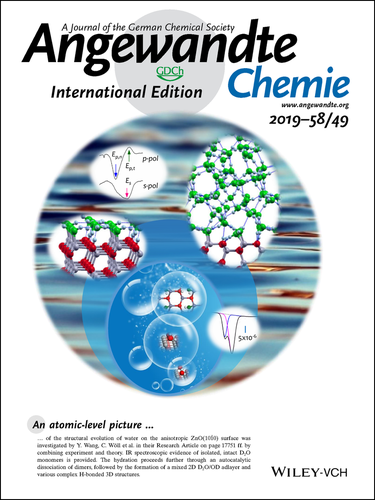Inside Cover: Structural Evolution of Water on ZnO(10 0): From Isolated Monomers via Anisotropic H-Bonded 2D and 3D Structures to Isotropic Multilayers (Angew. Chem. Int. Ed. 49/2019)
0): From Isolated Monomers via Anisotropic H-Bonded 2D and 3D Structures to Isotropic Multilayers (Angew. Chem. Int. Ed. 49/2019)
Graphical Abstract
An atomic-level picture of the structural evolution of water on the anisotropic ZnO(10 0) surface was investigated by Y. Wang, C. Wöll et al. in their Research Article on page 17751 ff. by combining experiment and theory. IR spectroscopic evidence of isolated, intact D2O monomers is provided. The hydration proceeds further through an autocatalytic dissociation of dimers, followed by the formation of a mixed 2D D2O/OD adlayer and various complex H-bonded 3D structures.
0) surface was investigated by Y. Wang, C. Wöll et al. in their Research Article on page 17751 ff. by combining experiment and theory. IR spectroscopic evidence of isolated, intact D2O monomers is provided. The hydration proceeds further through an autocatalytic dissociation of dimers, followed by the formation of a mixed 2D D2O/OD adlayer and various complex H-bonded 3D structures.





